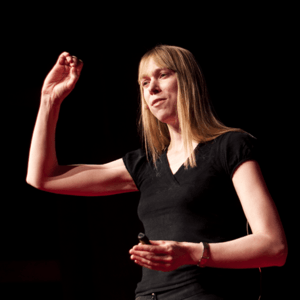Catherine Heymans facts for kids
Quick facts for kids
Catherine Heymans
FRSE
|
|
|---|---|

Heymans in 2014
|
|
| Born | 1978 Hitchin, Hertfordshire, England
|
| Alma mater | University of Edinburgh (MPhys) University of Oxford (DPhil) |
| Known for | Weak gravitational lensing |
| Awards | George Darwin Lectureship (2017) Herschel Medal (2022) |
| Scientific career | |
| Fields | Astrophysics |
| Institutions | University of Edinburgh Max Planck Institute for Astronomy University of British Columbia Institut d'astrophysique de Paris |
| Thesis | Weak gravitational lensing and intrinsic galaxy alignments |
| Doctoral advisor |
|
Catherine Elizabeth Heymans FRSE (born 1978) is a British astrophysicist. An astrophysicist is a scientist who studies space, stars, and galaxies. She is a professor at the University of Edinburgh. She also holds a very special title: the Astronomer Royal for Scotland.
Contents
Early Life and Education
Catherine Heymans grew up in Hitchin, a town in Hertfordshire, England. She went to Hitchin Girls' School.
She studied at the University of Edinburgh, where she earned a top degree in Physics in 2000. Later, in 2003, she completed her doctorate degree at the University of Oxford. Her research there focused on something called gravitational lensing.
What is Gravitational Lensing?
Gravitational lensing is like a giant magnifying glass in space. It happens when light from a distant galaxy bends around a huge object, like another galaxy or a cluster of galaxies. This bending makes the distant galaxy look stretched or distorted. Scientists use this effect to study things we can't see directly, like dark matter.
Career and Space Research
After her studies, Dr. Heymans worked at several famous research places. These included the Max Planck Institute for Astronomy and the University of British Columbia. She also worked at the Institut d'astrophysique de Paris and the University of Edinburgh.
In 2009, she received an important grant from the European Research Council. Soon after, she became a lecturer at the University of Edinburgh.
Studying the Universe with Weak Lensing
Dr. Heymans is well-known for her work using a technique called cosmic weak gravitational lensing. This method helps scientists learn more about the Universe. She led a big project called STEP1. She also helped lead the lensing part of the Canada–France–Hawaii Telescope Legacy Survey, known as CFHTLenS.
She is also a leader in the Kilo-Degree Survey (KiDS) project. This project uses the European Southern Observatory (ESO) telescopes to map large parts of the sky.
In 2018, Dr. Heymans received the Max Planck-Humboldt Research Award. This award was worth a lot of money, about €1.5 million. She used this award to help create a new research center in Germany. It is called the German Centre for Cosmological Lensing.
Dr. Heymans also teaches an online course called AstroTech. This course is about the science and technology used to discover things in space.
Awards and Special Titles
- In 2017, Dr. Heymans received the George Darwin Lectureship from the Royal Astronomical Society.
- In 2018, she became a Fellow of the Royal Society of Edinburgh (FRSE). This is a special honor for scientists in Scotland.
- In May 2021, she made history! She was the first woman ever to be named the Astronomer Royal for Scotland. She is the 11th person to hold this important position.
Personal Life
Catherine Heymans has a partner and three children. She has shared that her partner helps a lot with childcare. In March 2022, she experienced a health challenge. She continued her research activities by working in shorter periods.
Dr. Heymans also enjoys sharing science in fun ways. With a colleague from Edinburgh University, she has performed comedy shows about astronomy!
See also
 In Spanish: Catherine Heymans para niños
In Spanish: Catherine Heymans para niños

